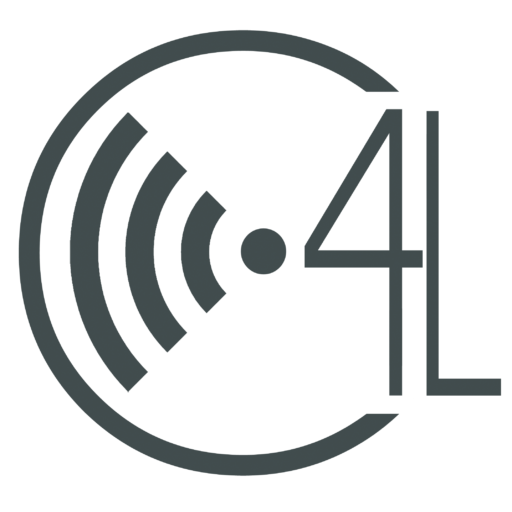In part one of this series we are going to take a deep dive at blogs. A Blog, shortened from the term “weblog”, is possibly the mostly easily accessible way to establish an online presence outside of social media platforms. Blogs are a format of online publishing that can range from self published articles, to tutorials, to very public diaries. They are primarily texted based with embedded images, graphics, and videos although there are offshoots like vlogs (video based web logs) and glogs (graphics based web logs). As far as organization, blogs are typically organized in reverse chronological order so the most recent “post” is what first appears. Blogs may also be organized by topic, strand, or category, and are searchable by “tags” placed in the blogs metadata. Blogging became a mainstream possibility in the late 1990’s when posting to the web became a possible without a background in HTML or coding. It wasn’t until the 2000’s that blogs became common place 1. This is in part due to the the creation of dedicated blogging platforms like Blogger and the adoption of blogs by organizations and publishers.
There is an element of social networking that happens with blogs (even more so with micro-blogging platforms like Twitter and Instagram) but it is rudimentary at best. This began with the ability for blog readers to subscribe and comment. When a reader subscribes to a blog they are agreeing to receive notifications, typically by email, of new blog posts as they are published. This is also possible with blog aggregators like Feedly, Flipboard, and Pocket. The ability to leave and reply to comments on a specific blog post created an avenue for pseudo-discussion boards focused on the content of the post.
Although there are dedicated blogging platforms like Blogger, WordPress, Tumblr, and Wix, most content publishers today have at least a portion of their website dedicated to blogs. You can see this with popular edtech bloggers like Shakeuplearning, DitchThatTextbook, and Cult of Pedagogy
Speaking of blogging platforms, I took three for a spin: Blogger, WordPress, and Wix. All three share similar affordances, but there are trade offs with each. All three or are technically free (WordPress is free but you must pay for server hosting), and relatively simple to use from the start. All three platforms give you the flexibility to create multimedia blogs, vlogs, and/or glogs. You can also create multiple pages to house different topics or additional content besides your blog (much like a traditional website). A selection of organized themes are standard for all three platforms with Blogger being, in all honesty, the ugliest and WordPress and Wix being the most visually pleasing. Additionally, all three allow for multiple authors and editors, have moderation tools for comments, and allow customized domains (for an additional cost).
As I said earlier, each platform have unique benefits and trade offs:
Blogger
Benefits
- A part of Google suite of products so it integrates well for Google Workspace users
- Largest free blogging platform in the world
- Large user and help community
- Google Analytics integrated
Trade offs
- Dated design
- Lack of plugin or widgets
- Limited post formatting options (i.e. custom headers and post layout)
Wix
Benefits
- Intuitive interface
- WIX ADI makes creating blog very easy
- Modern and pleasing themes
- Helpful plugins
Trade offs
- Can be overly feature rich for a new user
- Publishing post takes more clicks
WordPress
Benefits
- Completely open design experience
- Unlimited themes and plugins
Trade offs
- Very complicated for first time users
- Requires purchasing a hosting service or to host on your own server
Blogs as an educational tool affords many possibilities. They provide an avenue for students to publish their work for a real audience. It give teachers and students alike a voice and a larger audience than those in the four walls of a classroom. They can be used to create and share portfolios, discussion forums, and repositories. Blogs give students a means to practice written communication and teachers a way to share additional learning and resources with students. For professional development leaders, blogs afford the opportunities to extent the PD session beyond the bounds of the session. For example, you will often see PD leaders post not only the content of their sessions, but also further commentary, videos, etc. on the topic.
I can think of two specific use cases for blogs based off my background in English/Language Arts and Instructional Technology.
English/Language Arts
One struggle I always had with teaching English is getting students to write authentically about what they are reading. Something I have done in the past is to create a blog that had multiple threads. Each thread has a genre of writing or reading that the students will be studying at that time. The students would, for example, during the argumentative text unit respond to a given prompt with their argument using evidence from documents discussed/read during class. Each student would be an author for the blog so they could post their writing as post on that thread/page. They could also use the comment feature to respond to classmate’s posts.
This would facilitate students thinking, writing, and communicating at analyze, evaluate, and create level of Blooms. It promotes agency and communication while also scaffolding because students that struggle with a task will be able to see examples from their peers to model. This approach uses all the features of blogs: public facing, multi authoring, and dialogical. With that said it would likely only be in the enhance area of SAMR because although it makes the sharing easier, it can be done in a classroom setting on paper using the Kagan strategy Think-Write-Round-Robin.
Chrome Squad Portfolios
A second strategy that I have implemented in the past is using blogs as a portfolio tool for my student interns, the Chrome Squad. The Chrome Squad is organized into teams that work on specific job related tasks. For example, the podcast team writes, records, edits, produces, and publishes podcast. They are required to keep a portfolio of their work over the year(s) they are in the program. They have used these portfolios to successfully earn scholarships, get admitted into colleges, and find employment. Each intern creates a blog, with most using either Blogger or Bulb. They keep artifacts of the projects their team has worked on , a history of their design thinking progress, and a log of their OKRs. OKR stands for Objectives and Key Results and is a form of goal setting that forces them to create “moon shot” goals with no more than a 60% chance of success. They then have to create a measurement metrics for the goal and track their progress towards that goal over time.
Their portfolio includes videos, images, graphics, audio files, embedded elements, and of course writing. These portfolio force them to think at the create and evaluate levels of Blooms. The idea of tracking their progress and reflecting on their work is based on Haddie’s Visible Learning which identifies goal setting, reflection, and meta-cognition as having large effect size. The ideas of moon shots is based on the work of Astro Teller and is well documented in the business world as a way to encourage risk taking and agency. Blogs are perfectly suited for this because they can organize the blog in either a stream of consciousness, chronological, or topical format. It also allows them to uses multiple forms of media and embedded items.
Conclusion
Now there are limitations to using blogs. First, they require time to be spent teaching both yourself and students how to use them. Second, there are privacy concerns particularly with younger students. A product like Bulb or KidBlog might be a better solution, or using Google Docs/Sites as a sort of pseudo-blog. Third, blogs are difficult to grade. If each student has a blog that they post to once a week, and you have 150 students. That is 150 individual links to be clicked and read. (Here is a hint. They don’t have to be graded to have value. They just have to have real readers.)
Despite this, with the right training and oversight by the teacher the benefits of blogs outweigh the concerns. Blogs have the power to give students a voice and make the world feel smaller. When I had my students blogging they found they quickly had real life people reading and responding to their posts from all over the country. It brought value to what they were doing and made them want to write more often and better.
Photo by Lukas Blazek on Unsplash
- A History of Blogging. Notre Dame of Maryland University. https://online.ndm.edu/news/communication/history-of-blogging/

